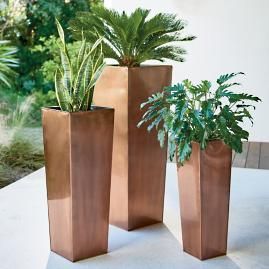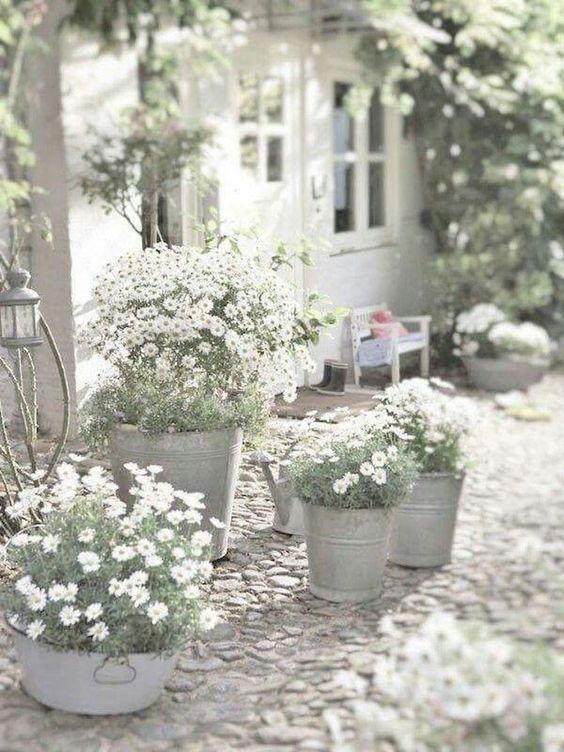Container gardening is a super-easy way to dress up your front porch, add a splash of color to shady areas, or cope with poor soil in your yard. Many plants thrive in containers. The most important thing is good drainage. Make sure there’s a hole in the bottom of your pot so plants don’t drown and read the tag or talk to the nursery to learn which plants do well in your specific conditions, such as full sun or shade.

With spring just around the corner, there’s no better time to start shopping for the perfect pot to display your greenery and showcase your aesthetic. Consider this collection of oversized pots that are sure to add visual interest to your space.

Terra-Cotta
Available in a variety of shapes and sizes, terra-cotta pots look great just about anywhere and their earthy color will enhance the beauty of almost any plant. Made of a porous clay rich in iron, terra cotta has the ability to “breathe,” which keeps potting soils cool and wicks excess moisture away from plant roots, keeping them healthy. The main problem with using terra cotta, is that it is relatively fragile (watch for hard frosts that can crack containers) and it can dry out quite rapidly, especially in sunny locations.
Note: Some growers prefer glazed terra-cotta pots because they hold water much more effectively.

Plastic
If you’re not concerned about container appearance or have plants that eventually grow to cover the pots they are planted in, plastic is a great choice. Plastic nursery pots are durable, retain moisture well, and are relatively inexpensive. They are also very lightweight, which makes them an excellent choice if you like to re-arrange your gardens.
Do not use black, or dark colored plastic pots if your container garden will be located in a very sunny location. These colors absorb heat and will get very hot, which can damage tender roots. Light colored containers reflect the heat and keep the roots cool.

Concrete
One thing about concrete – it’s heavy! Which makes it ideal for containing large plants or trees that require more support to keep them…well, “contained.” It also has good insulating properties, protecting tender root systems by maintaining a comfortable soil environment. When planting in exposed or public areas, concrete has the added advantage of discouraging anyone from “accidentally” walking off with your prized plants or pots. Concrete planters can be left outside over the winter without harm, which is good since you’re probably not going to want to move them.

Wood
One of the most practical and natural containers for gardening. Wood planters look great, retain water well and are relatively lightweight. When selecting wooden containers, make sure that they are made with rot-resistant woods like cedar or redwood and check for quality construction, since wood will shrink and expand in the elements. Planters made out of pine or other softwoods can also be used but should be painted with a non-toxic paint or stain to prevent rot. As for expense, you can easily manufacture a wooden planter in no time with a few nails, some scrap wood and a creative idea.
